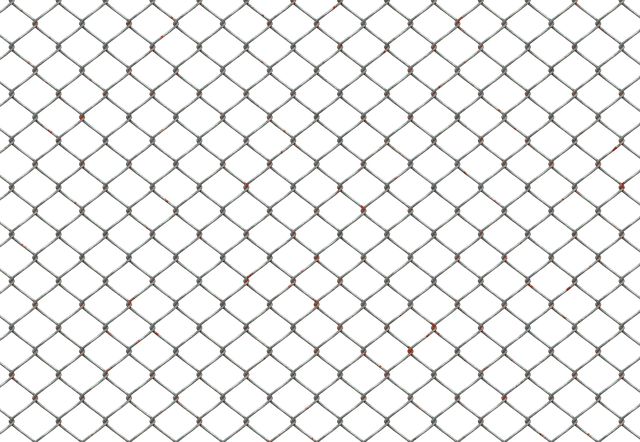Fences are an essential element of outdoor home aesthetics and functionality, and proper staining and sealing can transform a simple wooden barrier into a stunning feature. This article guides you through the process, from understanding the benefits of fence staining to choosing the perfect color and formula for your space. It offers practical tips on preparation, application, and maintenance to ensure your stained fence remains protected and beautiful for years to come.
- Understanding Fence Staining: Benefits and Types
- Preparing Your Wooden Fence for Staining
- Choosing the Right Stain: Color and Formula
- Step-by-Step Guide to Professional Fence Staining
- Sealing Techniques to Protect Your Stained Fence
- Maintenance Tips for Longevity of Stained Fences
Understanding Fence Staining: Benefits and Types
Fence staining is not just about enhancing the aesthetic appeal of your wooden fence; it’s a crucial process that protects the wood from the elements, prolongs its lifespan, and maintains its beauty. The primary benefits include increased durability, improved resistance to rot, mold, and UV damage, and enhanced visual appeal. Staining also allows for better color retention compared to natural weathering.
There are various types of fence stains available in the market, each offering unique features and advantages. Water-based stains, for example, are environmentally friendly, quick-drying, and easy to apply. Oil-based stains, while more durable, can take longer to dry and may require more frequent reapplication. Some advanced stains come with UV protection, ensuring your fence stays vibrant even under intense sunlight.
Preparing Your Wooden Fence for Staining
Before applying any stain or sealer to your wooden fence, proper preparation is key to achieving a long-lasting, high-quality finish. Start by thoroughly cleaning the fence to remove any dirt, debris, or loose wood fibers. This can be done using a pressure washer or a stiff brush and garden hose. Ensure that all surfaces are free from dust and grime for optimal adhesion.
Next, inspect the fence for any signs of damage, such as split boards, peeling paint, or rot. Repair these issues to prevent further deterioration. Sanding the fence lightly can also help to roughen the surface slightly, allowing the stain to better penetrate and create a more even color. Make sure to wear protective gear during this process to avoid skin irritation from sawdust.
Choosing the Right Stain: Color and Formula
When it comes to enhancing your wooden fence with stain, one of the most critical decisions is selecting the ideal color and formula. The right stain should not only complement your outdoor aesthetic but also protect the wood from elements like UV rays, moisture, and fungi. Start by considering the existing finish of your fence—if it’s a natural, unstained look, you might want a light-colored stain to highlight the grain while providing some protection. Darker stains, on the other hand, can create a more dramatic effect, obscuring the wood’s natural tone but offering superior concealment and weather resistance.
Formula is equally important. Some stains are designed for enhancing the wood’s natural beauty, while others block out UV rays and repel water. Semi-transparent or transparent formulas allow for some light penetration, preserving the wood’s appearance while providing protection. Solid or satin finishes, however, offer maximum coverage and durability but may alter the wood’s original color more drastically. Choose based on your desired look and the level of protection needed for your fence.
Step-by-Step Guide to Professional Fence Staining
To achieve professional results when staining your wooden fence, start by preparing the surface. This includes cleaning the fence thoroughly to remove any dirt, mildew, or previous stains using a pressure washer or a stiff brush and soapy water. Once dry, sand the entire fence to roughen the surface, improving paint or stain adherence. Fill in any cracks or holes with wood putty and let it dry completely.
Next, apply an even coat of primer designed for exterior use, allowing it to dry according to the manufacturer’s instructions. This step ensures better color absorption and longevity of the stain. Choose a high-quality fence stain that suits your desired finish—semi-transparent for enhanced grain visibility or solid for complete coverage. Apply the stain with a brush or roller, working in the direction of the wood grain. Allow the first coat to dry, then apply additional coats as needed for the desired shade. Finish by sealing the fence with a protective coating to safeguard against the elements.
Sealing Techniques to Protect Your Stained Fence
After staining your wooden fence, sealing it is the next crucial step. Sealing protects your freshly stained wood from elements like UV rays from the sun, rain, and harsh winds, which can cause fading or cracking over time. Choose a high-quality sealant designed for outdoor use to ensure maximum protection.
There are several sealing techniques available. You can opt for a clear sealant that provides minimal coverage while still shielding the wood. Semi-transparent sealants offer better protection while allowing some natural grain of the wood to show through. For complete concealment and enhanced protection, consider a solid color sealant. Apply these sealants with a brush, roller, or sprayer according to the manufacturer’s instructions for even distribution and optimal results.
Maintenance Tips for Longevity of Stained Fences
Regular maintenance is key to keeping your stained fence looking its best and ensuring its longevity. After staining, a protective sealer should be applied to lock in the color and provide an extra layer of defense against the elements. This process should be repeated every few years or as recommended by the manufacturer.
In between sealings, keep your fence clean by brushing off loose dirt and debris. Use a soft-bristled brush and mild soap and water for any stubborn stains. Avoid harsh chemicals, as they can strip away the stain and sealer. Additionally, check for any signs of damage or rot and repair these issues promptly to prevent further deterioration.
